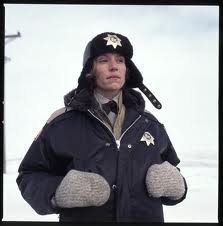
Fireworks are a class of low explosive pyrotechnic devices used for aesthetic and entertainment purposes. They are most commonly used in fireworks displays (also called a fireworks show or pyrotechnics), combining a large number of devices in an outdoor setting. Such displays are the focal point of many cultural and religious celebrations.
Most fireworks consist of a paper or pasteboard tube or casing filled with the combustible material, often pyrotechnic stars. A number of these tubes or cases may be combined so as to make when kindled, a great variety of sparkling shapes, often variously colored. A skyrocket is a common form of firework, although the first skyrockets were used in warfare. The aerial shell, however, is the backbone of today's commercial aerial display, and a smaller version for consumer use is known as the festival ball in the United States.
Fireworks were originally invented in China. China remains the largest manufacturer and exporter of fireworks in the world.
The earliest fireworks came from China during the Song dynasty (960–1279). Fireworks were used to accompany many festivities. The art and science of firework making has developed into an independent profession. In China, pyrotechnicians were respected for their knowledge of complex techniques in mounting firework displays.
During the Han dynasty (202 BC – 220 AD), people threw bamboo stems into a fire to produce an explosion with a loud sound. In later times, gunpowder packed into small containers was used to mimic the sounds of burning bamboo. Exploding bamboo stems and gunpowder firecrackers were interchangeably known as baozhu (爆竹) or baogan (爆竿). It was during the Song dynasty that people manufactured the first firecrackers comprising tubes made from rolled sheets of paper containing gunpowder and a fuse. They also strung these firecrackers together into large clusters, known as bian (lit. "whip") or bianpao (lit. "whip cannon"), so the firecrackers could be set off one by one in close sequence. By the 12th and possibly the 11th century, the term baozhang (爆仗) was used to specifically refer to gunpowder firecrackers.
Colored fireworks were developed from earlier (possibly Han dynasty or soon thereafter) Chinese application of chemical substances to create colored smoke and fire. Such application appears in the Huolongjing (14th century) and Wubeizhi (preface of 1621, printed 1628), which describes recipes, several of which used low-nitrate gunpowder, to create military signal smokes with various colors. In the Wubei Huolongjing (武備火龍經; Ming, completed after 1628), two formulas appears for firework-like signals, the sanzhangju (三丈菊) and baizhanglian (百丈蓮), that produces silver sparkles in the smoke. In the Huoxilüe (火戲略; 1753) by Zhao Xuemin (趙學敏), there are several recipes with low-nitrate gunpowder and other chemical substances to tint flames and smoke. These included, for instance, arsenical sulphide for yellow, copper acetate (verdigris) for green, lead carbonate for lilac-white, and mercurous chloride (calomel) for white. The Chinese pyrotechnics were described by the French author Antoine Caillot (1818): "It is certain that the variety of colors which the Chinese have the secret of giving to flame is the greatest mystery of their fireworks." Similarly, the English geographer Sir John Barrow (ca. 1797) wrote "The diversity of colours indeed with which the Chinese have the secret of cloathing fire seems to be the chief merit of their pyrotechny."
Fireworks were produced in Europe by the 14th century, becoming popular by the 17th century. Lev Izmailov, ambassador of Peter the Great, once reported from China: "They make such fireworks that no one in Europe has ever seen." In 1758, the Jesuit missionary Pierre Nicolas le Chéron d'Incarville, living in Beijing, wrote about the methods and composition of Chinese fireworks to the Paris Academy of Sciences, which published the account five years later. Amédée-François Frézier published his revised work Traité des feux d'artice pour le spectacle (Treatise on Fireworks) in 1747 (originally 1706), covering the recreational and ceremonial uses of fireworks, rather than their military uses. Music for the Royal Fireworks was composed by George Frideric Handel in 1749 to celebrate the Peace treaty of Aix-la-Chapelle, which had been declared the previous year.
"Prior to the nineteenth century and the advent of modern chemistry they [fireworks] must have been relatively dull and unexciting." Bertholet in 1786 discovered that oxidations with potassium chlorate resulted in a violet emission. Subsequent developments revealed that oxidations with the chlorates of barium, strontium, copper, and sodium result in intense emission of bright colors. The isolation of metallic magnesium and aluminium marked another breakthrough as these metals burn with an intense silvery light.
United States
In the United States, the laws governing fireworks vary widely from state to state, or from county to county. Federal, state, and local authorities govern the use of display fireworks in the United States. At the federal level, the Consumer Product Safety Commission (CPSC) regulates consumer fireworks through the Federal Hazardous Substances Act (FHSA). The National Fire Protection Association (NFPA) sets forth a set of codes that give the minimum standards of display fireworks use and safety in the U.S. Both state and local jurisdictions can further add restrictions on the use and safety requirements of display fireworks. There are currently 46 states in the United States in which fireworks are legal for consumer use.
America's earliest settlers brought their enthusiasm for fireworks to the United States. Fireworks and black ash were used to celebrate important events long before the American Revolutionary War. The very first celebration of Independence Day was in 1777, six years before Americans knew whether or not the new nation would survive the war; fireworks were a part of all festivities. In 1789, George Washington's inauguration was accompanied by a fireworks display. George Marshall was an American naval hero during the War of 1812 and other campaigns. He was a Master Gunner and pyrotechnics specialist who wrote Marshall's Practical Marine Gunnery in 1822. The book outlines chemical formulas for the composition of fireworks. This early fascination with fireworks' noise and color continues today with fireworks displays commonly included in Independence Day celebrations.
In 2004, Disneyland, in
Anaheim, California, pioneered the commercial use of aerial fireworks launched with compressed air rather than gunpowder. The display shell explodes in the air using an electronic timer. The advantages of compressed air launch are a reduction in fumes, and much greater accuracy in height and timing. The Walt Disney Company is now the largest consumer of fireworks in the world.- 3 cups vegetable juice
- 1 jar (16 ounces) picante sauce
- 1 medium-sized tomato, diced
- 1/2 a medium-sized green bell pepper, diced
- 1/2 a medium-sized cucumber, diced
- 2 scallions, thinly sliced
- 1 cup sour cream (optional)
- In a large bowl, combine all the ingredients except the sour cream; mix well. Cover and chill for at least 2 hours, or until ready to serve.
- Serve each bowl topped with a dollop of sour cream, if desired.
***If you want to give this some real zing, start off with a spicy-style vegetable juice and top with a bit of fresh ground pepper.










1 comment:
Since we live about 15 minutes up the freeway from Disneyland we hear the fireworks there every night. They are very loud. I can imagine when in the park when they go off you would need ear plugs!
XO Trisha
Post a Comment